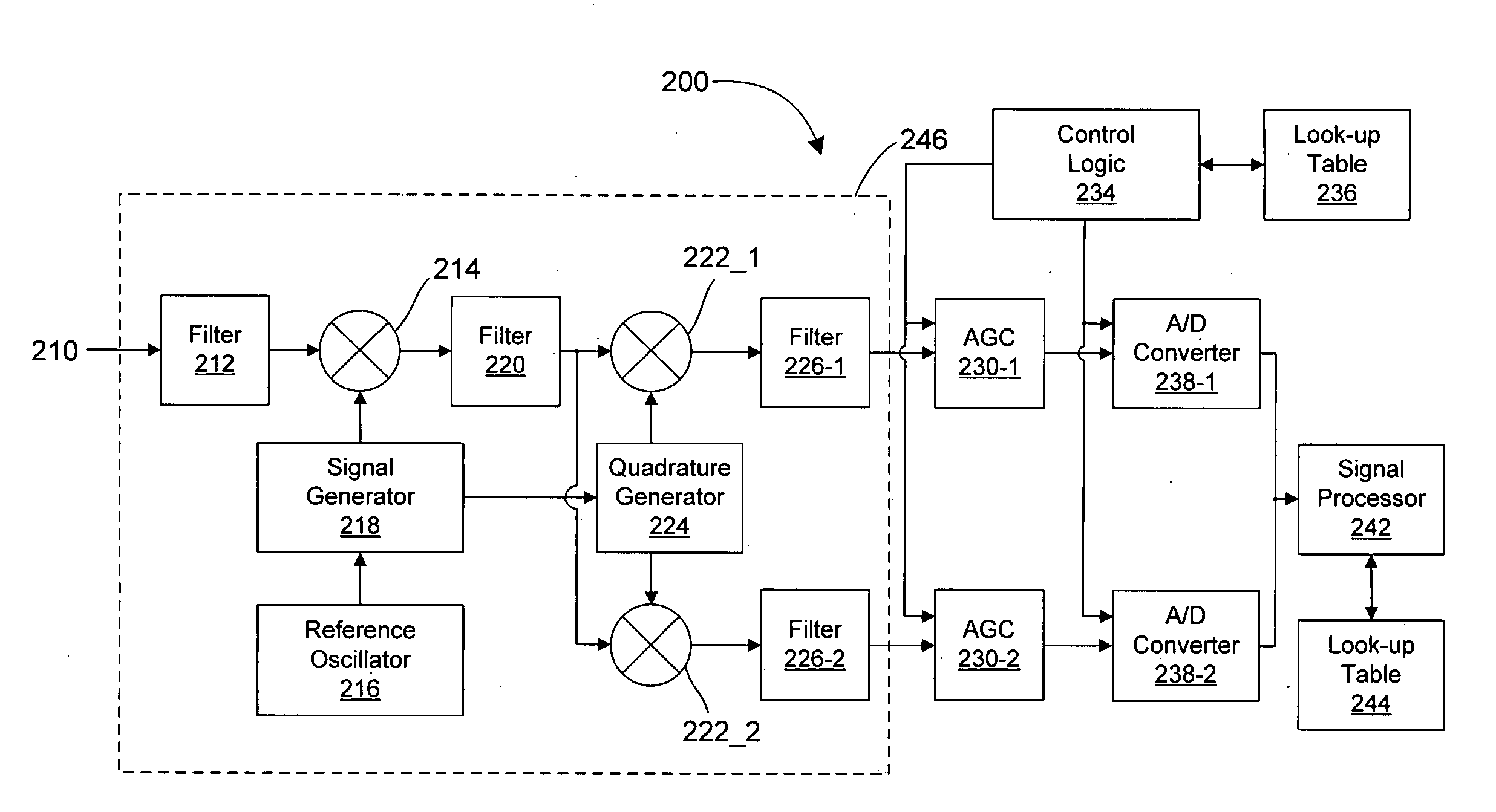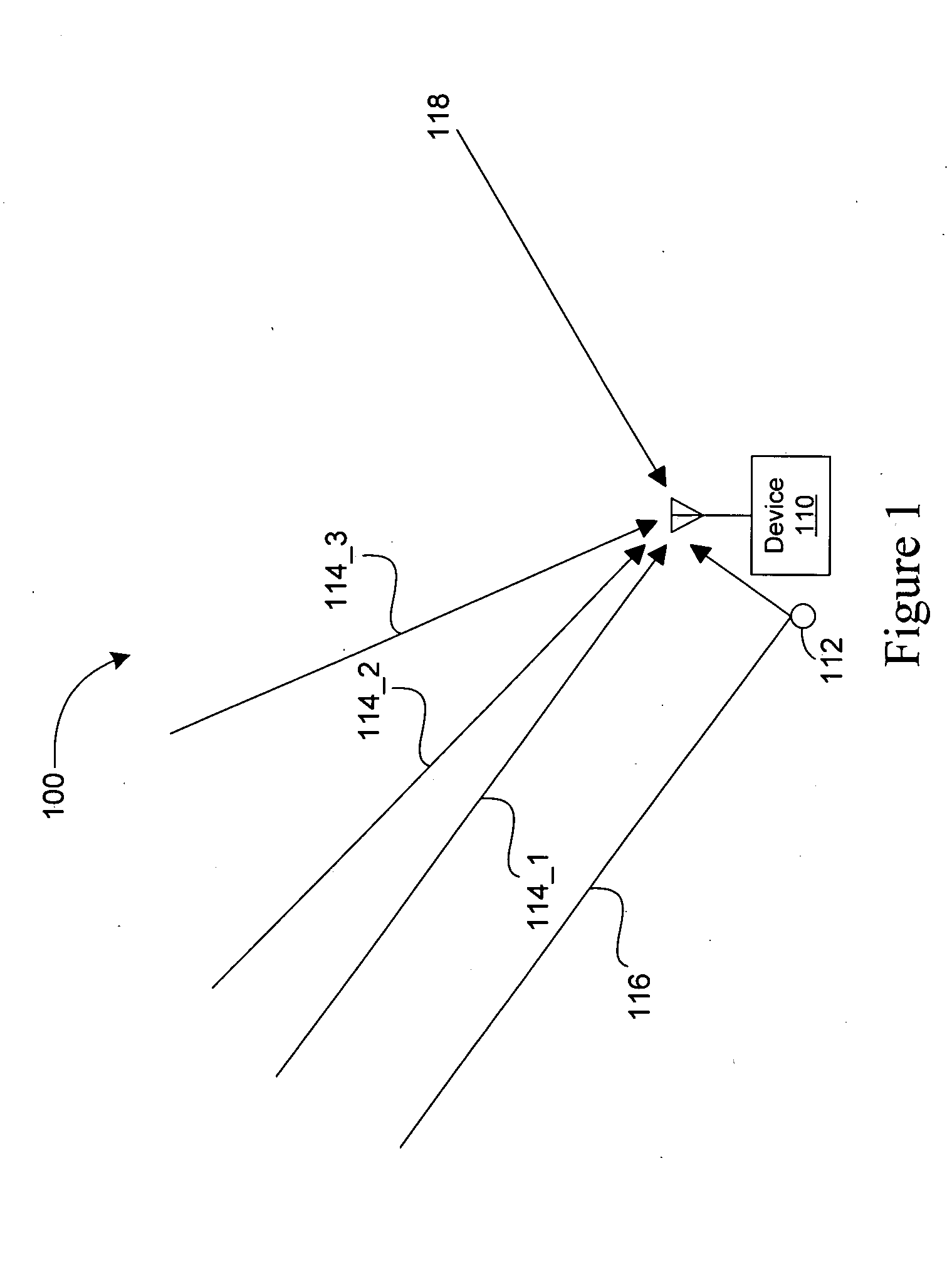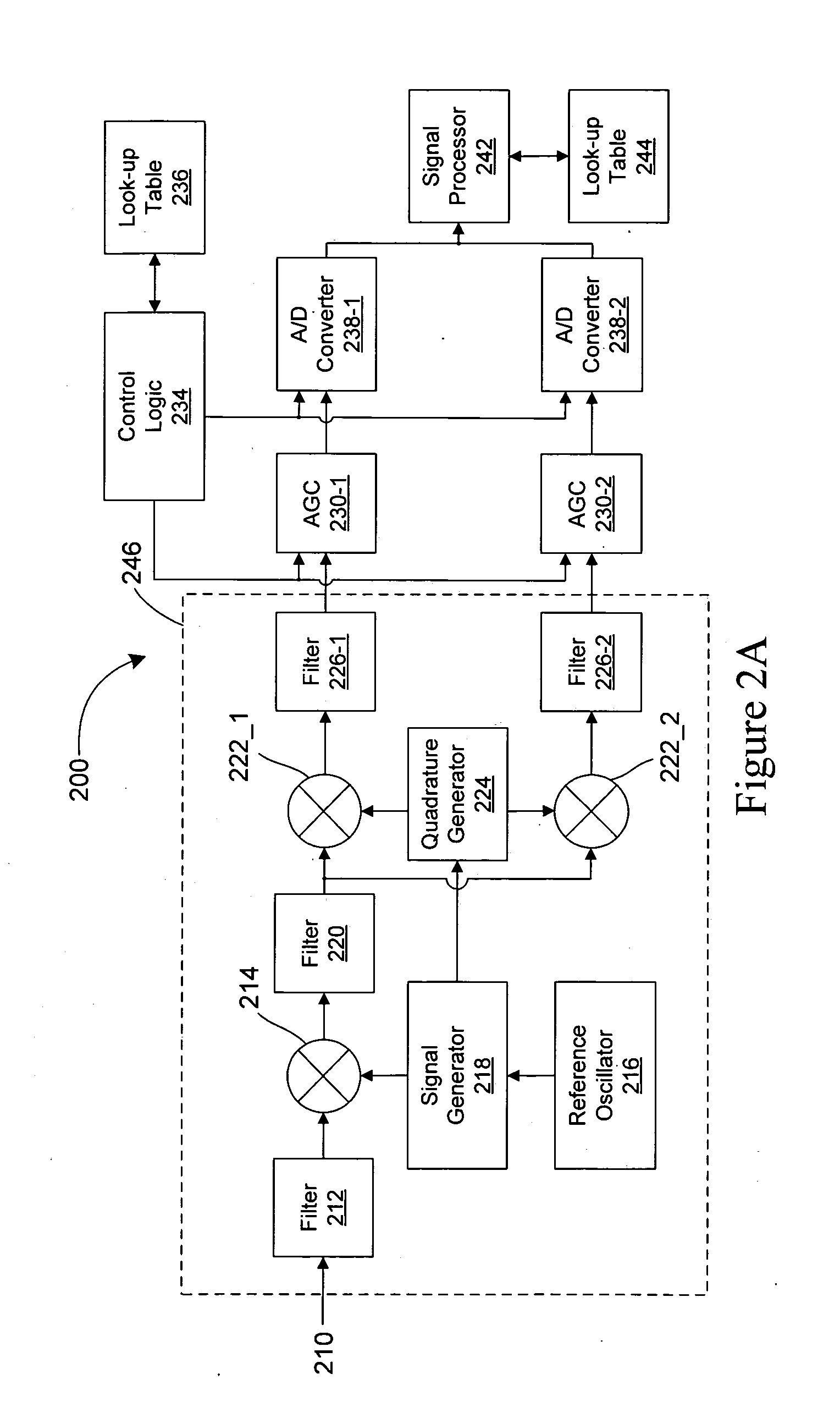Adaptive code generator for satellite navigation receivers
a satellite navigation and code generator technology, applied in multiplex communication, pulse technique, instruments, etc., can solve the problems of complex circuitry and cost to the receiver
- Summary
- Abstract
- Description
- Claims
- Application Information
AI Technical Summary
Benefits of technology
Problems solved by technology
Method used
Image
Examples
embodiment 400
[0071] As illustrated in FIG. 4, generation of spread-spectrum codes is often implemented using shift registers, such as shift registers 410. In embodiment 400, a power n of a respective X variable in the Galois Field polynomials corresponds to a shift register stage number that contains a feedback bit from n bit times previous. Bit 10, the oldest bit, is an output of the shift register 410. Each bit time the registers are right-shifted and the exclusive- or 412 of selected bits (bit position is prior to shift) is fed back into bit 1. An exclusive- or 418 of outputs from the shift registers 410 produces an output 420, which is a sequence corresponding to the C / A code.
[0072] For the C / A code, both of the shift registers 410 have an initial state of all ones, i.e., 3FF hexadecimal. Each of the shift registers 410 produces a different sequence of register values that contains all 1023 unique 10-bit non-zero integers. Both of the shift registers 410 automatically recycle to their initia...
an embodiment 500
An embodiment 500 of a shift register 510 implementing the L2C codes is illustrated in FIG. 5. Embodiment 500 differs from embodiment 400 (FIG. 4) in several ways. There is only one 27-state shift register 510, instead of two 10-bit shift registers 410 (FIG. 4). The bits in shift register 510 are numbered from right-to-left in order to correspond to the X-delays in the polynomial. And for L2C feedback, an exclusive- or of an output bit from the shift register 510 is taken with several register bits (multiple-bit feedback as opposed to single-bit feedback in FIG. 4).
embodiment 600
[0077] L2CM (for civilian use, medium length code) and L2CL (for civilian use, long length code) use a 0.5115 Mz code rate and are 50% time multiplex ed with each other. As illustrated in embodiment 600 in FIG. 6, an L2CM code signal 610 is broadcast the first half of each 0.5115 MHz clock and an L2CL code signal 612 is broadcast in the second half of the clock. The L2CM code signal 610 and the L2CL code signals 612 are combined using time domain multiple access (TDMA) enable signal 614. The TDMA enable 614 alternately selects the L2CM code signal 610 (M in FIG. 6) and the L2CL code signal 612 (L in FIG. 6). The TDMA enable 614 switches between the code signals 610 and 612 at a 1.023 MHz rate with a 50% duty cycle for each code producing L2C combined code signal 616. A bit-edge rate of the L2C combined code signal 616 is 1.023 MHz, and it alternates half bits of the L2CM code signal 610 and the L2CL code signal 612.
[0078] The L2CM code has a length of 10230 bits and repeats every 20...
PUM
 Login to View More
Login to View More Abstract
Description
Claims
Application Information
 Login to View More
Login to View More - R&D
- Intellectual Property
- Life Sciences
- Materials
- Tech Scout
- Unparalleled Data Quality
- Higher Quality Content
- 60% Fewer Hallucinations
Browse by: Latest US Patents, China's latest patents, Technical Efficacy Thesaurus, Application Domain, Technology Topic, Popular Technical Reports.
© 2025 PatSnap. All rights reserved.Legal|Privacy policy|Modern Slavery Act Transparency Statement|Sitemap|About US| Contact US: help@patsnap.com



